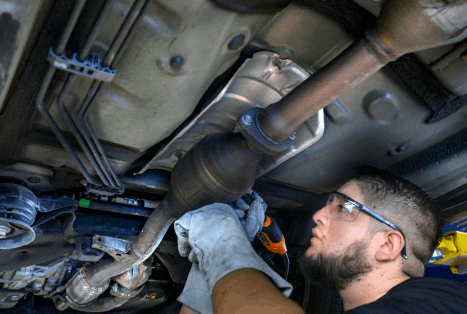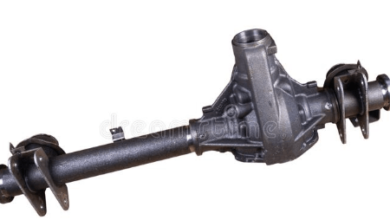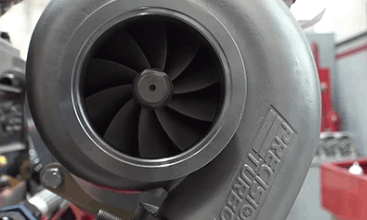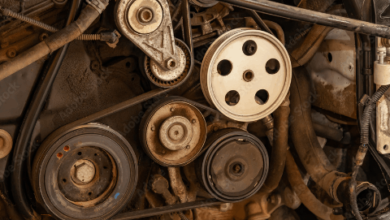Cheapest Way to Fix a Catalytic Converter – Detailed Guide
The catalytic converter is not a cheap part of the exhaust system of your car. And once it breaks down, it creates a very bad symptom on your car. So, because of these symptoms, you are trying to fix the problem. And also, if you are an experienced driver, you know that fixing or changing it is not a cheap thing. If you are here, you are looking for the cheapest way to fix a catalytic converter. And we will try to explain these in different ways.
What Are the Cheapest Ways to Fix a Catalytic Converter?

The Different Ways to Fix a Catalytic Converter and How to Deal with the Problem with That Part without Giving Quotes of Money from Your Purse.
Catalytic Converter Cleaners
This is the first place where you can apply instantly. There are special fluids that you are adding to your fuel tank, and once you run your engine, these cleaners or fluids will clean the clogs and the unwanted material inside the catalytic converter that prevents it from working properly.
They are generally cheap things that you can buy from a regular auto market, and also, you can find them on the internet without any hardship. You can buy them for around several dollars, and you just need to follow the instructions on these catalytic converter cleaners.
But if this situation is serious with your catalytic converter, this cleaner cannot be the complete solution for your converter. You may need much more serious things to do in general.
Try Driving at High Speeds
For a catalytic converter, it is very important to work at a specific temperature. If you are doing some city driving in general, there is no time for heating the catalytic converter before driving. Because of that, the catalytic converter can clog during city driving.
Several times, what you need to do is to bring your car to a highway and run your car at high RPMs on the highway. This will heat the catalytic converter, and the flow inside the exhaust system will be much harder. And this flow can clean up the clogs inside the catalytic converter at a specific temperature.
But we do not recommend you make very high speeds on highways as it can be dangerous for the traffic. You need to be sure that you are not exceeding the speed limits of the highway, and also, you need to be sure that the highway is as empty as possible.
Try Driving at High Speeds
For a catalytic converter, it is very important to work at a specific temperature. If you are doing some city driving in general, there is no time for heating the catalytic converter before driving. Because of that, the catalytic converter can clog during city driving.
Several times, what you need to do is to bring your car to a highway and run your car at high RPMs on the highway. This will heat the catalytic converter, and the flow inside the exhaust system will be much harder. And this flow can clean up the clogs inside the catalytic converter at a specific temperature.
But we do not recommend you make very high speeds on highways as it can be dangerous for the traffic. You need to be sure that you are not exceeding the speed limits of the highway, and also, you need to be sure that the highway is as empty as possible.
Cleaning the Catalytic Converter
This is the hardest thing that you can do because you need to rip the catalytic converter off from your car. This is something fairly intricate if you are not familiar with car mechanics. Removing the catalytic converter requires some special tools and knowledge of how to apply them.
The location of the catalytic converter is generally below your car, which means you need to lift your car from the ground to reach the catalytic converter fasteners. Additionally, some catalytic converters are connected with welding to the tailpipe system, which means you need to cut the catalytic converter from the tailpipe. Once you clean it, you need to weld it back onto the tailpipe system.
Also, this process is called catalytic converter flush. You can prepare a soapy water solution and place the catalytic converter inside that water for 24 hours. This soapy water will dissolve the clogged channels of the catalytic converter. Cleaning these clogged materials with high-pressure cleaners will then become much easier.
Once you are sure about the dryness of the catalytic converter after this process, you can reinstall it in your car. This is the most effective way that you can apply, although it can be challenging. And most likely, you will not have to pay for anything.
Alternatively, you can bring your car to a car mechanic or a service to have the catalytic converter flushed for several dollars.
Catalytic Converter Replacement
If you do not have a budget for replacing a catalytic converter with OEM parts, you can consider second-hand catalytic converters for your car. Just take a look at scrap yards and second-hand part sellers to find a good-condition catalytic converter.
If you want to buy an OEM part, you will need to pay around $700 to $5,000 for a catalytic converter, which is quite high. Generally, catalytic converters are designed to last for the lifetime of the car, so it’s not a part that needs frequent replacement. If you find a good-condition second-hand catalytic converter, you can purchase it for $100 or $200, which can be a very effective solution for you.
What if There’s Physical Damage to the Catalytic Converter?
As mentioned, all the solutions explained so far are for catalytic converter clogs. However, the catalytic converter can also be damaged by external sources, which means you may need to replace the system entirely with a new one.
In some cases, the repair of physical damage may be possible in the hands of a highly experienced car mechanic. They may be able to perform some weldings or fastenings to repair the damage, and the cost for this process may be relatively low.
Symptoms of a Failing Catalytic Converter
There are various symptoms that indicate a failing catalytic converter:
- Rotten Egg Smell: A strong rotten egg or sulfuric smell is an important symptom of a failing catalytic converter. This odor occurs when NOx emissions are not properly reduced inside the catalytic converter.
- Sound: If you hear unusual sounds coming from the exhaust system of your car, it could indicate physical damage to your catalytic converter. Flowing exhaust fumes can cause these sounds, and it’s important to identify the source. If the sound is coming from the catalytic converter, it suggests there is damage to the system.
- Reduced Horsepower: Clogs in the catalytic converter channels can lead to a decrease in your car’s horsepower. The engine needs to exert a specific amount of power to push exhaust fumes through these internal channels. However, if these channels are clogged with accumulated dirt, the engine will require more power, resulting in reduced performance.
- Check Engine Light: If the check engine light is illuminated on your dashboard, along with experiencing the aforementioned symptoms, it indicates a problem.
- Color Change or Damage on the Housing: If you observe a color change or damage in a specific section of the catalytic converter housing, it suggests overheating. An overheated catalytic converter can cause harm to the internal channels. It’s important to investigate the sources of this overheating.
Conclusion on the Cheapest Ways to Fix a Catalytic Converter
As explained, there are different issues that can occur with a catalytic converter, and we have provided various solutions and explanations for fixing them. Some problems can be resolved using the basic methods we discussed, while others may require a complete replacement.
If you have additional comments or questions about the cheapest ways to fix a catalytic converter, feel free to leave them below.
Check the related topics about catalytic converter systems in vehicles;
How to Unclog a Catalytic Converter? Easy Way to Solve!
How Many Catalytic Converters Does a Car Have? Simple Answer!
How to Remove Catalytic Converter? Simple Steps to Replace It



